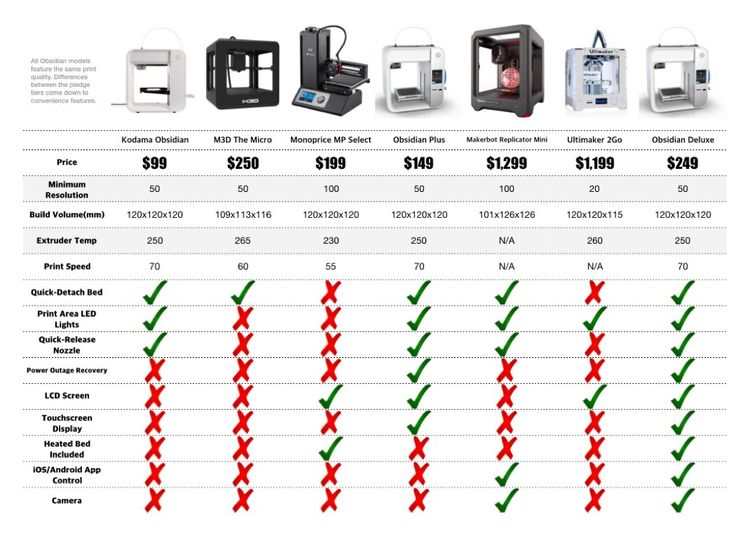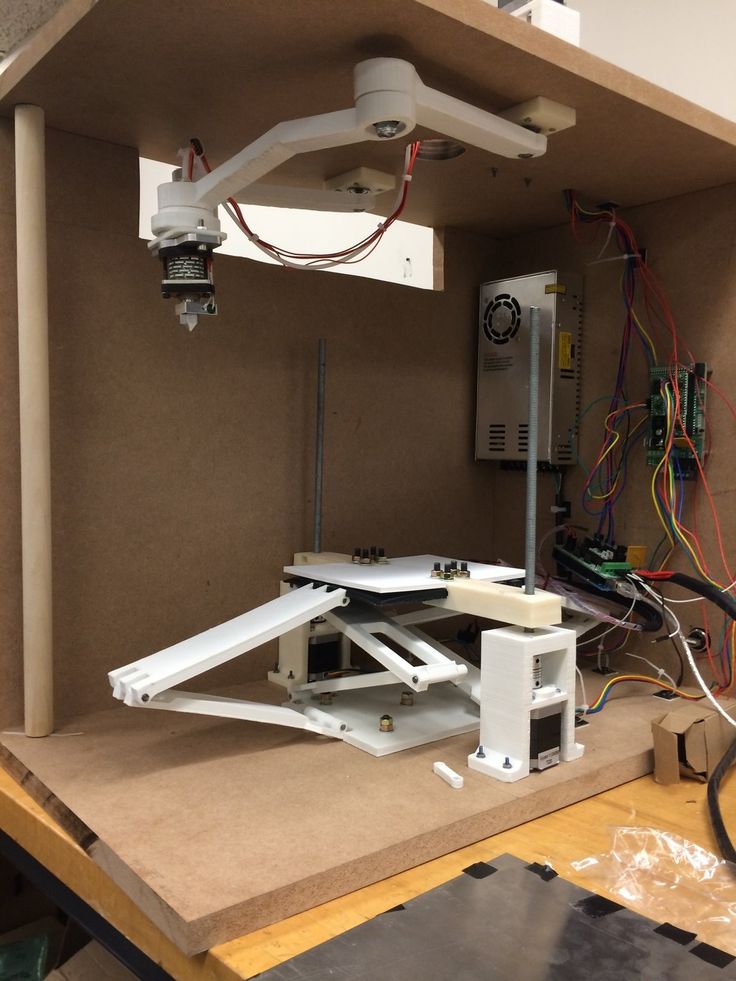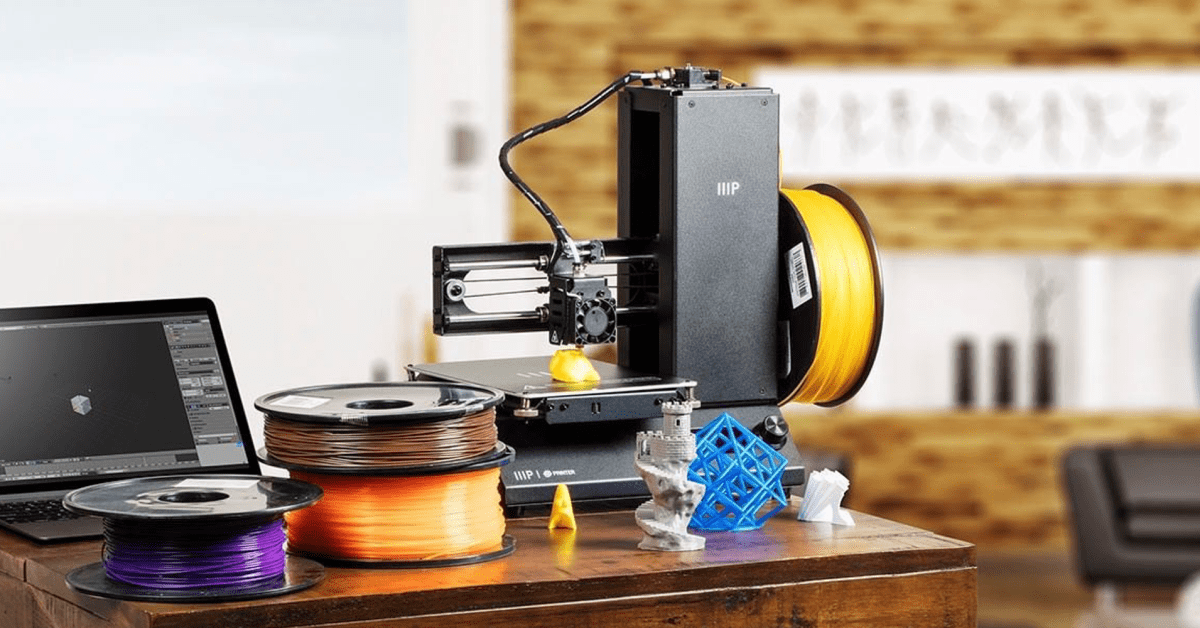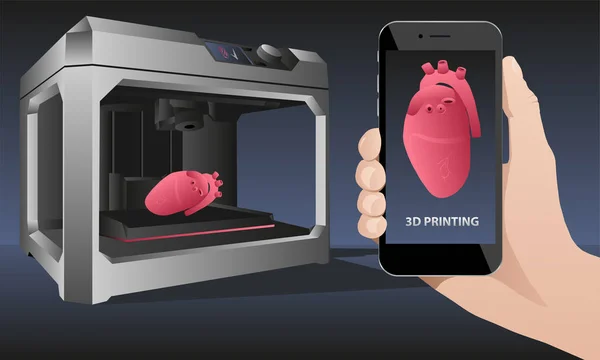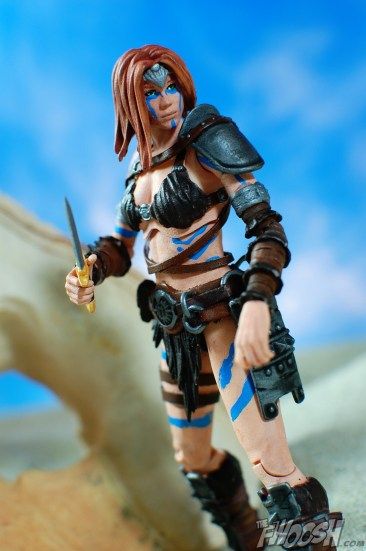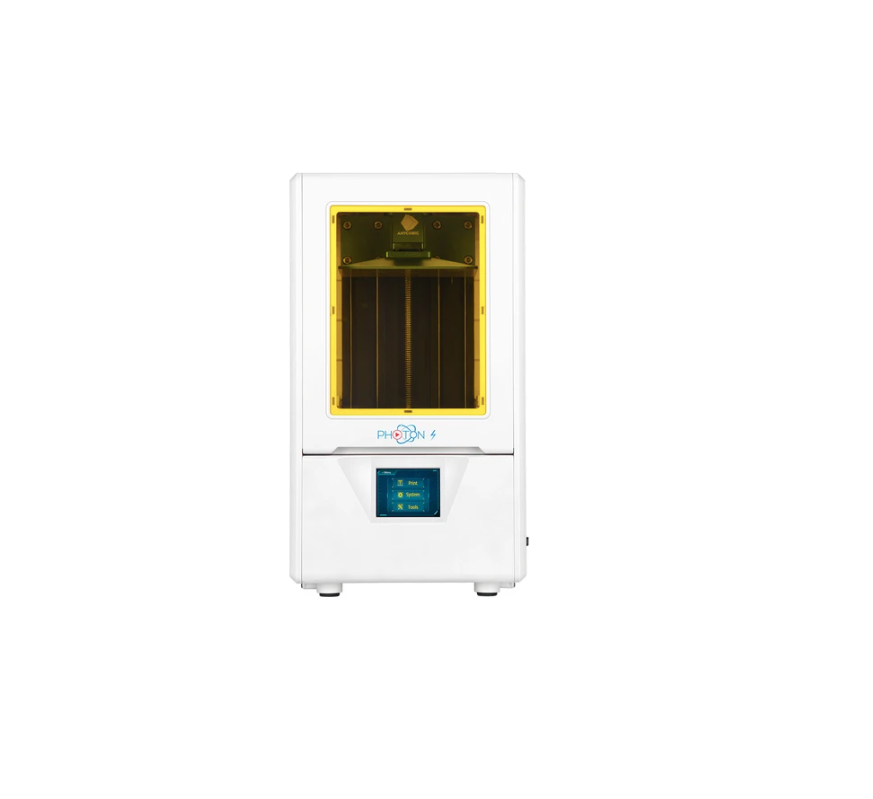What is the highest resolution 3d printer
8 Best High Resolution 3D Printers In 2022
- Last Updated: December 19, 2022
- Pat Nathaniel
When looking for a 3D printer, you look at features like build volume, extruder type, nozzle, build plate to suss out the best.
But in the end, if we’re honest, all we want are picture-perfect prints printed quickly.
And that’s what this article highlights: the best FDM and resin 3D printers that produce the highest resolution prints in the shortest amount of time.
Prusa i3 MK3S+
Build volume: 250 x 210 x 210 mm
Check Official Website
Check Latest Price
Check Kit Price
Elegoo Mars 2 Pro
Build volume: 129 x 80 x 160 mm
Get Discount Now
Check Latest Price
Phrozen Sonic Mega 8K
Build volume: 330 x 185 x 400 mm
Get Discount Now
Check Latest Price
Table of Contents
- The Best High Resolution 3D Printers (FDM)
- The Best High Resolution 3D Printers (SLA/Resin)
- FDM 3D Printers:
- 1.
Creality Ender 3 V2 (Best for Beginners to Advanced Users)
- 2. Prusa I3 MK3S+ (Best Value)
- 3. Dremel DigiLab 3D45 (Best for Education)
- 4. Ultimaker S5 (Large Build Volume)
- 1.
- SLA/Resin 3D Printers:
- 5. Elegoo Mars 2 Pro (Best Choice)
- 6. Phrozen Sonic Mini 8K (Beginner Friendly)
- 7. Anycubic Photon Mono X (Prints Fast)
- 8. Phrozen Sonic Mega 8K (Premium Choice)
- What is Resolution in 3D Printing? X, Y, and Z Resolution
- Other Factors That Affect Print Quality
- Material
- Printer Stability
- Type of Printing
- Temperature
- Slicer settings
- Nozzle size
- When Do High-Quality 3D Printers Make the Most Difference?
- Advantages and Disadvantages for High Resolution 3D Printers
- Advantages
- Disadvantages
- SLA VS FDM
- Which is Stronger: FDM or SLA?
- What is the Effect of 3D Print Resolution on Speed?
The Best High Resolution 3D Printers (FDM)
1.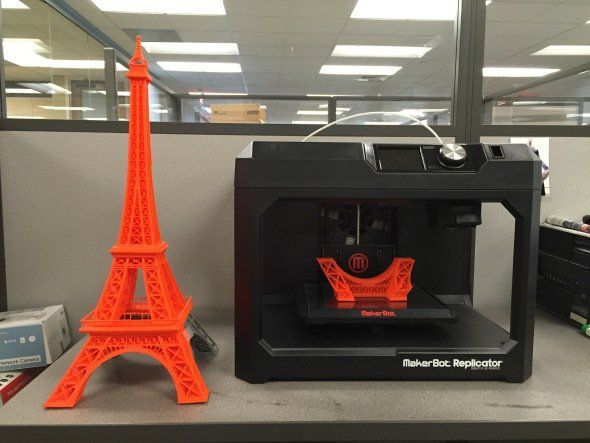 Creality Ender 3 V2 (Best for Beginners to Advanced Users)
Creality Ender 3 V2 (Best for Beginners to Advanced Users)
2. Prusa i3 MK3S+ (Best Value)
3. Dremel DigiLab 3D45 (Best for Education)
4. Ultimaker S5 (Large Build Volume)
The Best High Resolution 3D Printers (SLA/Resin)
5. Elegoo Mars 2 Pro (Best Choice)
6. Phrozen Sonic Mini 8K (Beginner Friendly)
7. Anycubic Photon Mono X (Prints Fast)
8. Phrozen Sonic Mega 8K (Premium Choice)
FDM 3D Printers:
1. Creality Ender 3 V2 (Best for Beginners to Advanced Users)3D Printer Type: FDM | Materials: PLA, ABS, TPU & PETG| Build Volume: 220 x 220 x 250 mm | Print Resolution: 100 microns
Cheap. Capable. Efficient.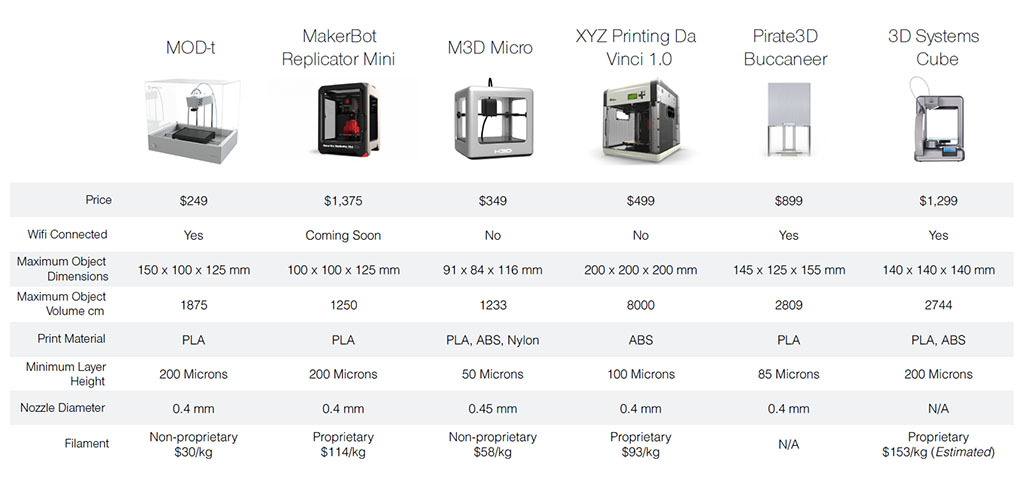 The Creality Ender 3 series is a 3D printing staple. And the upgraded Ender 3 V2 is one of the best budget printers, capable of churning out high-resolution prints.
The Creality Ender 3 series is a 3D printing staple. And the upgraded Ender 3 V2 is one of the best budget printers, capable of churning out high-resolution prints.
This world-class budget machine (yes, I used world-class and budget in the same sentence – the 3D printer is a delightful paradox) is perfect for newcomers. Once you buy this printer, you don’t need to purchase any other printer because this machine handles it all.
Stuck setting up your printer? Printing issues chipping away your happiness? Then Creality’s vast user base would be happy to solve the problem for you. The official community can be found on this site. There are plenty of Facebook groups as well.
Silent stepper motor drivers and a 32-bit mainboard are just some ways the V2 leveled up over its older brother, the original Ender 3 model.
The Bowden extruder in the V2 performs an admirable job of creating fantastic prints. The print resolution in the XY-axis and the Z-axis is 0.1mm.
The Ender 3 V2 comes with rare features at this price point, like a filament runout sensor and resume-printing option during a power cut. Coupled with a large build volume of 220 x 220 x 250 mm, it’s hard to find fault with this printer.
But alas, faults it does have. For instance, loading the filament into the Ender V2 was irksome. This was an issue we faced with the Ender 3 as well. And this high accuracy 3D printer requires assembly.
Don’t let the minor nitpick dissuade you, however. The Ender 3 is the best budget high resolution 3D printer.
- Produces amazing prints affordably
- Large community for support
- Filament loading is annoying
- Not plug and play
Get Discount (Official Store)
Check Latest Price
2.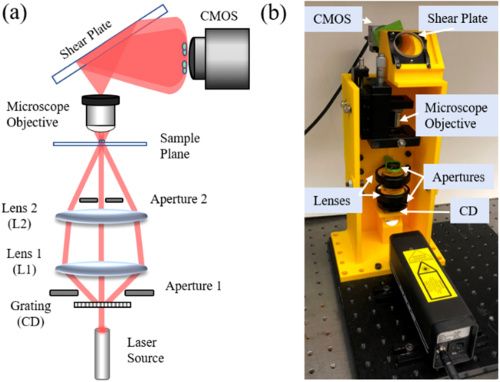 Prusa I3 MK3S+ (Best Value)
Prusa I3 MK3S+ (Best Value) 3D Printer Type: FDM | Materials: PLA, PETG, ASA, ABS, PC, HIPS, Flex, Nylon, Carbon filled & Woodfill | Build Volume: 250 x 210 x 210 mm | Print Resolution: 50 microns
The Prusa i3 MK3S+, a 3D printing heavyweight and an upgrade over its previous MK3S iteration, is expensive. But you get what you pay for – the printer over-delivers in terms of quality.
The printer setup can be challenging, especially if you decide to save with the cheaper kit version. But the gorgeous and detailed handbook shipped with the printer guides you meticulously through the whole process.
Shipped with the 3D printer are premium components like a magnetic PEI-coated steel spring heated bed and a custom E3D V6 hot end.
The I3 MK3S+ now comes with Prusa’s in-house PrusaSlicer software. Based on the previous Slic3r tool, it replaces the earlier two software options — one for beginners and one for advanced users — with one simple-to-use package.
Though if you prefer Simplify3D or Cura, the printer also works with them.
For high-resolution prints, it’s necessary to dampen vibrations during printing. The sturdy aluminum frame of the Prusa stops any shaking with ease, leading to better prints. The machine handles whatever you throw at it without breaking a sweat. The layer resolution is 0.05 mm, and the print quality is better than most other printers in the market. Take a magnifying glass or a microscope, you’d be hard-pressed to find flaws in the prints.
Another impressive characteristic of the Prusa is its incredibly fast printing speed of more than 200mm/s. Few FDM 3D printers can print so fast, although you probably won’t print in high resolution at those speeds.
The Prusa I3 MK3S is a brand that never disappoints and delivers on all fronts.
- High-res printing
- Incredible speed for an FDM printer
- Quiet
- Expensive
Get Discount (Official Store)
Check Latest Price
Check For Kit Price
3.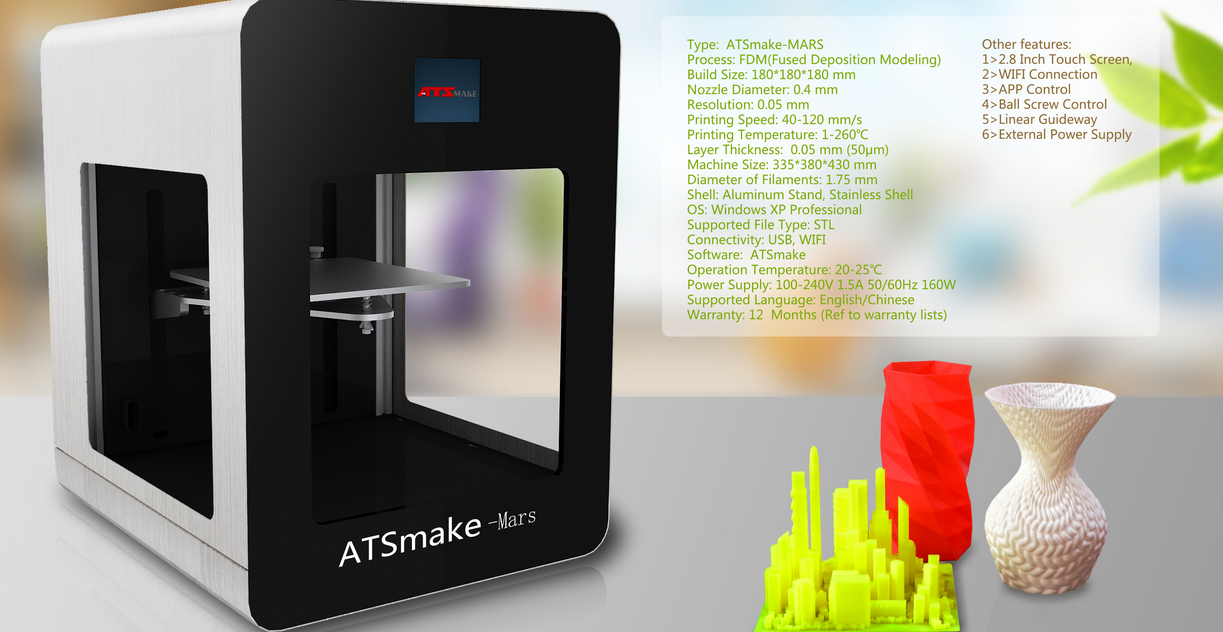 Dremel DigiLab 3D45 (Best for Education)
Dremel DigiLab 3D45 (Best for Education) 3D Printer Type: FDM | Materials: PLA, ECO ABS, PETG & Nylon | Build Volume: 254 x 152 x 170 mm | Print Resolution: 50 microns
The Prusa got you excited, and now you want more premium 3D printers to ogle at before you take your pick? Then take a look at the Dremel DigiLab 3D45; it gives Prusa a run for its money.
Large prints can be printed with ease with its large build volume of 254 x 152 x 170 mm. In addition, The DigiLab Slicer software uses the open-source Cura platform, which is suitable for both beginners and advanced users.
One of DigiLab’s unique features is its ability to handle filaments that most 3D printers can’t, like polycarbonate, Nylon, and EcoABS.
The 3D printer is perfect for classrooms. In fact, it comes with a curriculum meant for students from elementary to university levels. Students can easily use the printer as the machine was designed for learning.
Students can easily use the printer as the machine was designed for learning.
The DigiLab is safe for students. It is completely enclosed and it has a carbon filter, so you don’t have to worry about anyone inhaling toxic fumes. And there’s one more benefit with enclosed printers, they help regulate temperatures which result in higher resolution prints.
Just like the Prusa i3 MK3S, the 3D45 has an excellent resolution of 0.05 mm. And that reflects in the final prints, which look beautiful. And like the i3 MK3S, the printer excels at making high-quality prints consistently. Both printers are masters at their craft.
If you want a cheaper but equally effective Dremel printer, go for the Dremel 3D40 Flex.
The 3D40 does lack a couple of features, however – it can handle only PLA while the 3D45 can handle more (like I mentioned above). The 3D40 also lacks a camera for remote monitoring of prints, a heated platform to reduce warping, and a carbon filter to eliminate fumes.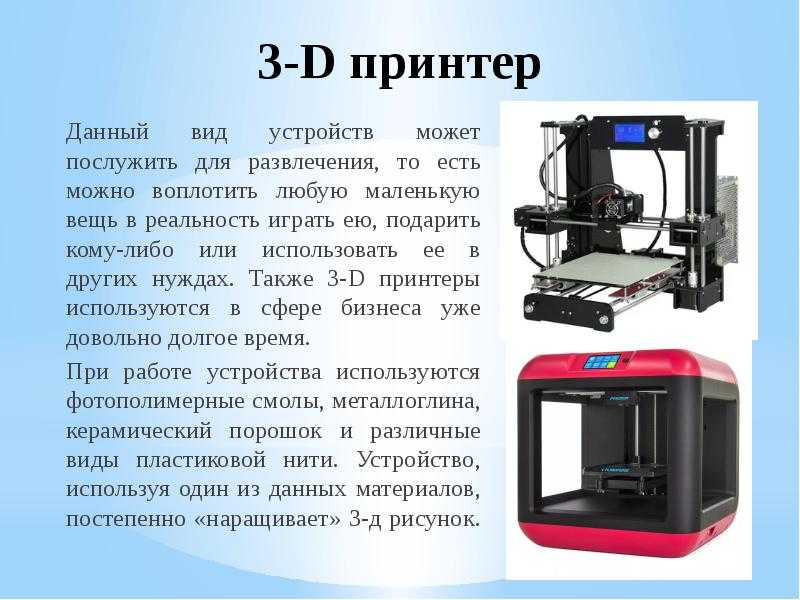
Even the best 3D printers have issues, and the 3D45 isn’t an exception. In addition to its hefty price, a major downside is its difficulty in handling third-party filaments. The Dremel works best with company-made filament. Similar to Apple, the printer is meant to function like a closed ecosystem.
But also just like the Apple, the Dremel performs flawlessly and is worth the big bucks it asks for.
- Exceptional print quality
- Educational material
- Fully enclosed
- Expensive
- Hard to use third party filaments
Check Latest Price
4.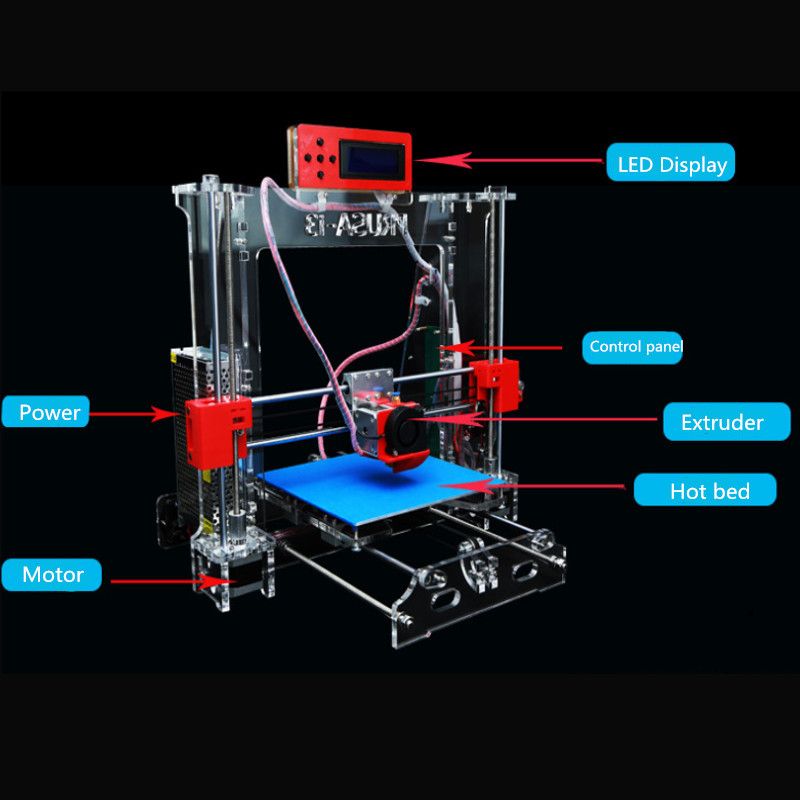 Ultimaker S5 (Large Build Volume)
Ultimaker S5 (Large Build Volume) 3D Printer Type: FFF | Materials: Tough PLA, TPU 95A, ABS, Nylon & TPU | Build Volume: 330 x 240 x 300 mm | Print Resolution: 0.25 mm nozzle: 150 – 60 micron, 0.4 mm nozzle: 200 – 20 micron, 0.6 mm nozzle: 300 – 20 micron & 0.8 mm nozzle: 600 – 20 micron
This 3D printer is for the true professionals; for those that don’t play around. With one of the biggest build volumes and a dual-extruder, this is an Olympic grade printer
Make sure you have a desk dedicated just for S5, it’s humongous. The 3D printer is not meant for newbies, it’s meant for professionals and small business owners. There’s no better printer than this for creating functional prototypes.
The print bed comes with two types: a glass bed for everyday use and a special anodized aluminum bed for advanced materials (like polycarbonate and ABS). Both of these can be swapped easily.
Ultimaker Tough PLA, is a special PLA for functional prototyping, tooling, and manufacturing aids. This PLA has similar impact strength to ABS and also has a higher stiffness.
The feature that sets the S5 apart from other FDM 3D printers is its dual extruding feature. It comes with two printheads and two print cores.
The BB print core is meant only for PVA, whereas the AA print core is mainly for all other materials. If you want to print dual colors, use two AA cores. The PVA core is primarily used for support.
The user experience of the S5 is a delight. From the touchscreen to the loading filament, every aspect of the printer is intuitive to use.
If you want to squeeze the highest resolution possible out of an FDM 3D printer, then the S5 is the machine to get. It can reach incredibly low XY resolutions of 0.02 mm. The Z-axis resolution is 0.1mm.
The pricing for the Ultimaker S5 can make people sweat. Luckily, there’s a cheaper version of the S5- the S3 (around $2000 cheaper. But it’s still pricey).
But it’s still pricey).
Here are some of the features that make the S5 more expensive.
The Ultimaker is similar to the Dremel in that it’s preferable to use filaments from the company itself. If not, you could find yourself with poor-quality prints.
If you want the best high resolution 3D printer in the FDM category, the Ultimaker S5 is a no-brainer.
- Dual Extrusion
- Picture perfect print quality
- A joy to use
- Will suck your wallet dry
Check Latest Price
SLA/Resin 3D Printers:
5. Elegoo Mars 2 Pro (Best Choice)3D Printer Type: LCD | Materials: 405nm UV Resin | Build Volume: 129 x 80 x 160 mm | Print Resolution: 50 microns
A big advantage of resin printers is the high resolution they produce at a fraction of the price. And the Elegoo Mars 2 is an excellent example of this.
And the Elegoo Mars 2 is an excellent example of this.
The Mars 2 Pro comes with a 6.08 monochrome LCD with a 2K HD resolution which plays a huge factor in the quality of the prints.
The build quality is solid, with a CNC machined aluminum body. The 3D printer doesn’t budge, ensuring that the high-resolution prints maintain steady quality. Build size is small, as with most resin 3D printers.
Another advantage that resin printers have over FDM printers is their printing speed. They take about 1-2 seconds per layer, only. The Elegoo Mars 2 inherits this speed gene from the family of resin printers.
It prints miniatures with amazing precision. The XY resolution is 0.05 mm and the Z-axis resolution is just 0.01 mm.
You’ll find the 3D printer great for home use. Make sure to keep it in a ventilated space as resin fumes are toxic (luckily some of the fumes are mitigated by the carbon filter in the printer).
The Elegoo Mars 2 is the Creality of the resin world and is always a worthwhile buy.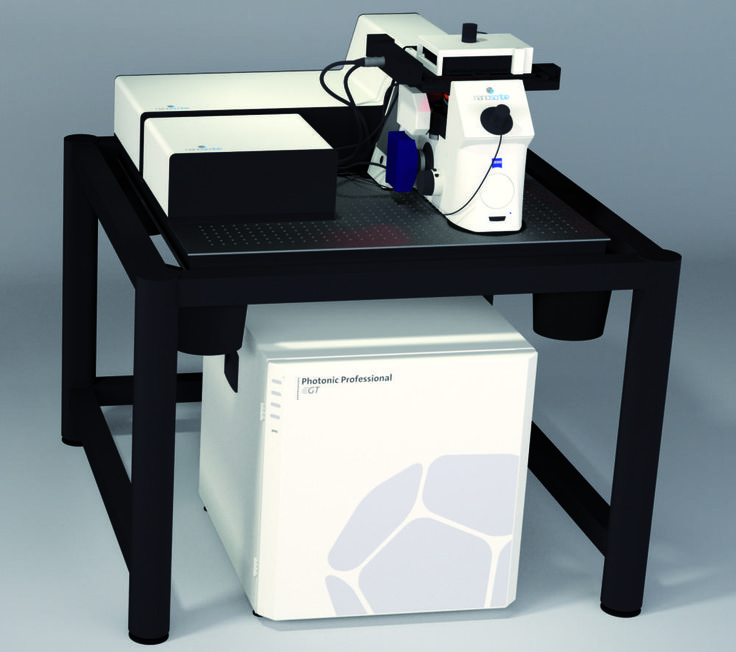
- Great prints
- Inexpensive
- Small build volume
Get Discount (Official Store)
Check Latest Price
6. Phrozen Sonic Mini 8K (Beginner Friendly)3D Printer Type: LCD | Materials: 405 nm UV Resins | Build Volume: 165 x 72 x 180 mm | Print Resolution: 22 microns
4K resin printing used to be all the rage and a game-changer. Then 8K came along and changed the game yet again. So, Phrozen updated its Sonic Mini 4K to the Sonic Mini 8K.
It’s still the familiar Mini, it just comes with double the K’s (and an orange enclosure).
The 8K screen treatment has improved the Mini’s accuracy somewhat. Whereas the 4K version reached layer resolutions of 0.035mm at 722 PPI, the 8K screen takes the printer up to 0.022mm at 1,152 PPI.
It’s not as drastic a jump as going from 2K to 4K screens, but the difference is still noticeable to sharp eyes.
Otherwise, the Mini 8K remains mostly the same. The print speed sits unchanged at 80mm/h and the minimum layer height is the same old 0.01mm.
Both specs were already good so why change them?
Source: Youtube FauxHammerMaximum print volume has expanded a bit to 165 x 72 x 180 mm thanks to the 8K LCD screen being bigger, which is welcome. At the same time, though, the printer is twice as heavy as the 4K.
The printer is still locked mostly to Phrozen’s own resins, which is a bit of a bummer. You can try third-party materials, but be ready to wrestle with your print settings for optimal results.
The price has unfortunately increased, too. Mini 8K is almost twice as expensive as the 4K version. But Phrozen still sells the 4K as well, so if you don’t need that slight increase in print detail, you can save your pennies.
All in all, Phrozen Mini 8K offers excellent miniature and jewelry 3D printing capabilities, much like its predecessor.
- Excellent resolution
- Expanded print volume
- Like the 4K, but better
- Increased price
- Still no full support for third-party resins
Get Discount (Official Store)
Check Latest Price
7. Anycubic Photon Mono X (Prints Fast)
Anycubic Photon Mono X (Prints Fast) 3D Printer Type: LCD | Materials: 405 nm UV Resins | Build Volume: 192 x 120 x 245 mm | Print Resolution: 50 microns
Most SLA printers are tiny. But Anycubic Photon Mono X breaks the mold. With its large build volume and high-resolution printing capability, it’s a highly desirable precision 3D printer on our list.
The frustrating thing about most SLA printers is small build volumes, so it’s welcome when printers like the Mono X hit the market.
Sometimes bigger is better (and more beautiful), and that’s exactly the case with this printer. Not to objectify printers, but the printer with its yellow acrylic lid is a looker.
When we compared prints between the Mono X and Phrozen Sonic Mini’s 4K version, we found that the latter is better in terms of print quality – but only by a margin. For 99% of people, the difference would be negligible. The Mono has a similar resolution to the Mini – 0.05 mm XY resolution and 0.01 mm Z axis resolution. The new Mini 8K has it squarely beaten, though.
The Mono has a similar resolution to the Mini – 0.05 mm XY resolution and 0.01 mm Z axis resolution. The new Mini 8K has it squarely beaten, though.
The addition of the WiFi on this printer was a ridiculous option. With this, you can only connect Anycubic’s mobile app to the printer. You can’t connect the slicer on the computer to the machine.
For those who have a business to run and who like to print fast, the printer is a speed-demon, with a printer velocity of 60 mm/h.
Price withstanding, the Mono X checks all the boxes you’d want in a high resolution 3D printer for resin printing.
- Huge build volume
- Printer looks stunning
- Prints look stunning
- Expensive
Get Discount (Official Store)
Check Latest Price
8. Phrozen Sonic Mega 8K (Premium Choice)
Phrozen Sonic Mega 8K (Premium Choice) 3D Printer Type: LCD | Materials: Compatible with Phrozen and 3rd Party Resins of 405 nm | Build Volume: 330 x 185 x 400 mm | Print Resolution: 43 microns
Did the Phrozen Sonic Mini 8K leave you hoping for bigger things? If so, you can’t get much bigger than the same company’s Sonic Mega 8K.
If you thought the Anycubic was huge, you’ve seen nothing yet. This absolute behemoth of a 3D printer comes with a mind-blowing 330 x 185 x 400 mm build volume.
Basically, you could print a baby with this thing.
But what’s possibly more stunning is that you’re not compromising high resolution or print detail for the build volume. Mega 8K has a resolution of 0.043mm, which you might notice beats Elegoo. That’s those 8K screens for you.
Source: Youtube Top 3D Shop Inc.To top it all off, the printer is easy to operate. The print bed is pre-calibrated (although the screws to attach are annoying to attach) and the machine has USB and Ethernet connectivity. A Wi-Fi module would be nice, but that’d probably make the price astronomical.
The print bed is pre-calibrated (although the screws to attach are annoying to attach) and the machine has USB and Ethernet connectivity. A Wi-Fi module would be nice, but that’d probably make the price astronomical.
Oh yes, let’s talk about the price.
This shouldn’t come as a surprise, but the price tag of this machine matches the build chamber’s size. It’s not bad value, considering the volume and print detail, but you’ll still have to sink a lot of money into the Mega 8K.
It’s also designed to work best with Phrozen’s resins, which will add to the running costs.
But if you want to print massive high-resolution parts, you can’t do much better than Phrozen Sonic Mega 8K.
- Enormous build volume
- Good resolution
- Simple operation
- Good value for the price
- Very expensive
- Slow printing
- Large prints are prone to layer separation
- Locked to ChituBox
Get Discount (Official Store)
Check Latest Price
What is Resolution in 3D Printing? X, Y, and Z Resolution
Source: Youtube MiniacThe technical definition of resolution in 3D Printing is the shortest distance a 3D printer nozzle travels when depositing filament.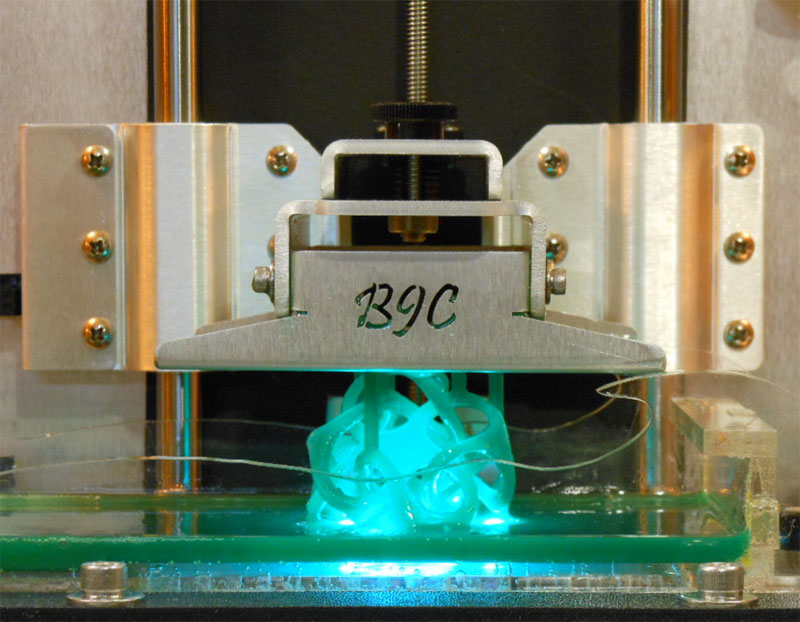
If you’ve ever purchased a phone or television (or maybe you made your girlfriend/boyfriend get them for you), you’d have come across the term resolution frequently. You’ll know that a 1080p screen has better picture quality than that of a 720p screen.
Likewise, in 3D printing, a high resolution 3D printer is by far the most important factor to consider when buying a printer if you want high-quality prints.
You’ll often hear terms like Z layer resolution and XY resolution in 3D printer reviews. The Z layer resolution is the height of a single layer in a 3D print. The X and Y resolution, on the other hand, is the shortest distance the nozzle travels in the horizontal direction.
Other Factors That Affect Print Quality
Source: Youtube NeedItMakeItMaterial
Not all materials print with the same quality: some materials produce higher quality prints than others.
Printer Stability
Vibrations during printing can hamper 3D printing accuracy. That’s why a sturdy, stable printer is important. All metal printers are sturdier than plastic printers.
That’s why a sturdy, stable printer is important. All metal printers are sturdier than plastic printers.
Type of Printing
Resin printing produces a higher resolution of prints than FDM printing.
Temperature
Different plastics print better at different temperatures. For ABS, extrusion temperatures of up to 240-250°C are ideal for accurate prints. PLA on the other hand benefits from temperatures of 200-220°C.
Slicer settings
Slicer settings play a big role in print quality, so make sure you play with these settings to get the perfect print. The layer height will have a big effect on print quality and print speed.
Nozzle size
The smaller the nozzle size, the more accurate and high resolution the print.
When Do High-Quality 3D Printers Make the Most Difference?
Source: Youtube MiniacHigh-quality 3D printers don’t make much of a difference on basic flat surfaces like a cube. A cheaper less accurate printer can even produce the same cube in a shorter period of time (because the nozzle diameter size is larger which means it deposits more filament in less layers).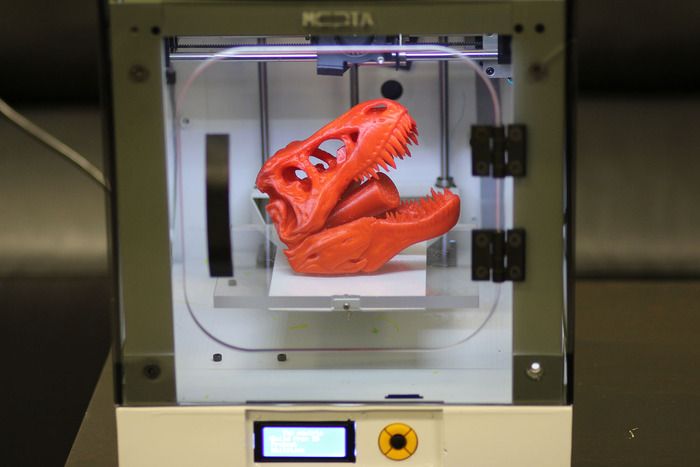
But if you love printing intricate miniatures, prints with curved or diagonal surfaces, or embossings and engravings, then the difference between a high resolution 3D printer vs a low-resolution printer is blatantly obvious.
Advantages and Disadvantages for High Resolution 3D Printers
High-quality 3D printers don’t make much of a difference on basic flat surfaces like a cube. A cheaper less accurate printer can even produce the same cube in a shorter period of time (because the nozzle diameter size is larger which means it deposits more filament in less layers).
But if you love printing intricate miniatures, or prints with curved or diagonal surfaces, or embossings and engravings, then the difference between a high resolution 3D printer vs a low-resolution printer is blatantly obvious.
Source: Youtube My Tech Fun
Advantages
Print Quality
Higher resolution printing naturally leads to smoother surfaces, finer details, and more accurate printing.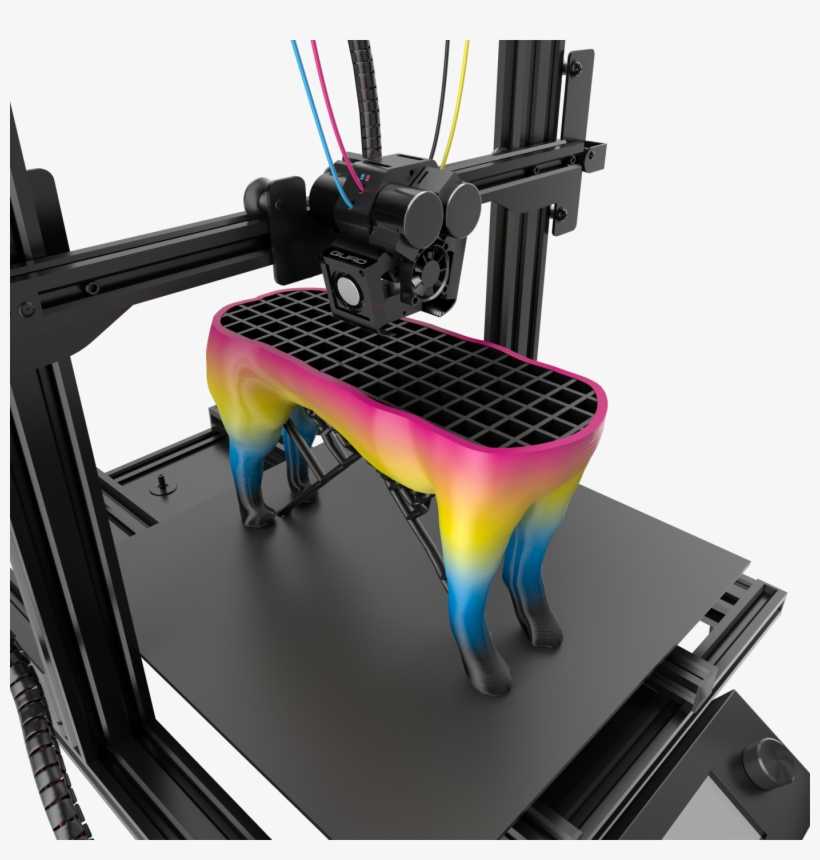
Efficient Workflows
High-res printing also leads to efficient workflows while being uncompromising on speed and quality.
More Variability in Creating Objects
These 3D printers can create the most intricate and complex of designs while maintaining quality.
Picture a model or a sculpture in your head. You can make a real-life version of that with the help of a high res 3D printer.
Disadvantages
Slow Speed
It’s not all sunshine, rainbows, and popcorn with high resolution 3D printers. A piece that may take an hour with a lower res 3D printer will take four hours to print on a high-res one.
More error-prone
The more layers in a print, the more time it takes to print, and the greater the chances of a printing error.
Requires Precise Calibration
Your printer setting game needs to be tight to get the highest resolution prints possible. The extrusion and bed temperatures must be just right, and the right nozzle must also be selected.
SLA VS FDM
Like we briefly touched on before, SLA (aka resin) 3D printers produce far more accurate prints than FDM printers.
SLA printers use UV or laser to cure the resin. These two light sources have different spot sizes. Anycubic Photon Mono X, a popular resin printer, has an XY resolution of 0.05mm and a Z layer resolution of 0.01mm. The resolution of most high-end consumer printers falls in this range.
On the other hand, FDM 3D printers don’t compare to resin printers. For example, one of the best FDM printers, the Prusa i3 MK3S+, has a Z layer resolution of only 0.05mm.
Which is Stronger: FDM or SLA?
Source Youtube Hoffman TacticalSLA might trounce FDM in detail quality, but when you start looking at part durability, the tables suddenly turn. FDM prints are much stronger and more durable than SLA prints.
Although SLA can produce extreme details, the prints are often brittle. They don’t withstand impacts and snap or break easily. You shouldn’t use SLA for parts that require any mechanical strength — its value is in the looks.
You shouldn’t use SLA for parts that require any mechanical strength — its value is in the looks.
FDM thermoplastics, on the other hand, are generally used even in heavy industries for functional parts. That should tell you all you need to know about their strength.
The ultimate durability of FDM parts depends on the material, how you printed it, and which printer you used. But in general, FDM is much stronger than SLA.
What is the Effect of 3D Print Resolution on Speed?
Source: Youtube Phrozen 3D PrinterSpeed is one of the main considerations in 3D printing, whether high or low resolution. When it comes to high-res 3D printing, you unfortunately have to sacrifice speed.
The general rule of thumb is that the higher the resolution, the lower the print speed.
That might be disappointing to hear, but it only makes sense. Just like it takes you longer to draw a more detailed picture than a stick figure, 3D printers take longer to cram in all the detail to high-resolution prints.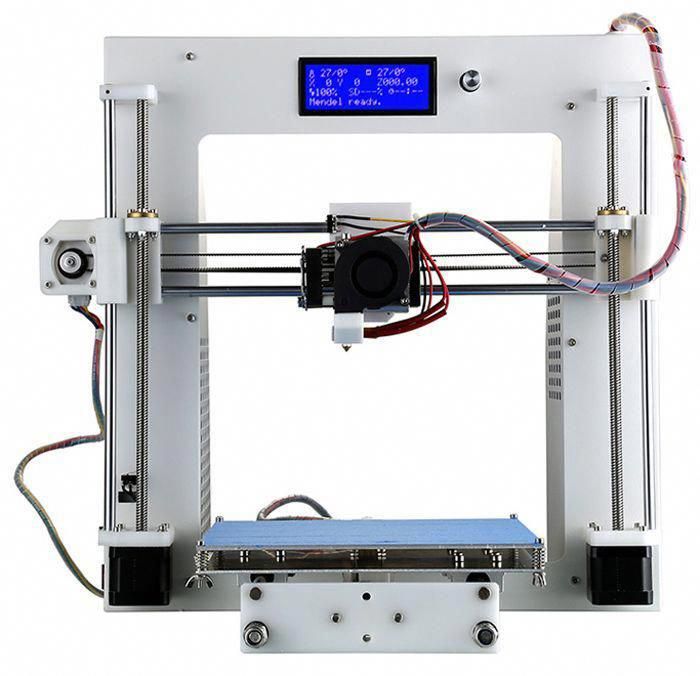
That said, printer manufacturers are locked in a constant battle of finding the optimal ratio of resolution vs. speed. Many of the printers on this list will produce great results in a relatively short time.
Phrozen announces the highest-resolution 3D printer to ever hit the commercial market
(Image credit: Phrozen /Future) Audio player loading…Phrozen, one of the world’s top manufacturers of 3D printers, has announced the Sonic 8K mini, a resin-based LCD printer with the highest resolution ever seen on a commercially available machine.
As the name would imply, this printer's 8K resolution can achieve crisp details at even the smallest sizes, with an XY resolution of 1152 PPI (or 22 Microns), making it fantastic for tabletop miniatures and prototyping products like jewellery.
While still being classed as a compact-sized printer, you’re getting a decent screen size of 7.1-inches, alongside other benefits like a solid metal resin vat and a 3.5-inch touch display panel.
- Check out our guide for the best 3D printer
- 3D printers could be making you ill
- This is the best 3D modeling software of 2021
The Phrozen Sonic 8K Mini is almost here
There are plenty of 3D printers on the market right now, but developments within the making space are coming thick and fast. If you’re on the market for something that can achieve extremely fine detail then you’ll be navigated towards resin-based printers (often called LCD, SLA or DLP dependant on what type of technology is being used), rather than filament (or FDM) printers thanks to their ability to pick up details without noticeable print lines.
The Sonic 8K looks to be especially capable of not only getting in teeny details on prints but also smooth surfaces without any noticeable layer lines which can reduce post-processing time for sanding or priming.
The early bird price for the Sonic Mini 8K will be $349.99 (around £260 / AU$480) with the original price set at $599. 99 (around £440 / AU$820), and will be available to preorder over on the Phrozen website from October 17 , though you’ll need to sign up for email alerts to get the notification regarding when preorders go live if you’re keen to get that early bird deal.
99 (around £440 / AU$820), and will be available to preorder over on the Phrozen website from October 17 , though you’ll need to sign up for email alerts to get the notification regarding when preorders go live if you’re keen to get that early bird deal.
Phrozen Sonic 8K Mini specifications
The specifications and dimensions of the Phrozen Sonic 8K Mini are as follows:
- Build Volume: 165 x 72 x 180 mm
- Layer Height: 0.01mm
- XY Resolution: 22 microns (7680 × 4320 pixels)
- Printing Speed: 80mm an hour
- Bed-Leveling: N/A
- Display: 3.5-inch touchscreen
- Third-Party Materials: Yes
- Materials: Specialist 8K UV resin
- Printer size: 290 x 290 x 420 mm
- Weight: 15kg
Phrozen is also launching a specialized 8K resin alongside the Sonic 8K, dubbed the Phrozen Aqua-Gray 8K Resin.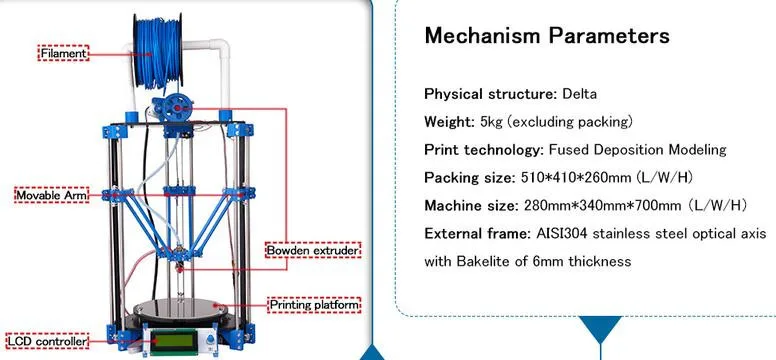
It’s not clear if this will be available in other colors going forwards but Gray is a fantastic base for almost every project and prototype anyway that can better display the details of your print than solid black or white.
“With the launch of Sonic Mini 8K, customers can now create extremely high-quality professional prints in 8K resolution effortlessly,” says Ray Wu, the CEO of Phrozen. “We aim to expand the accessibility of LCD 3D printing by continuing to create consumer-friendly and high-resolution 3D printers for the masses so that everyone can experience the joy of 3D printing.”
If you’re especially keen to know more then Phrozen has a Facebook group where it provides more exclusive information to group members, which may prove useful if you’re looking to get yourself to the head of the queue.
- 3D printers could finally be about to get a lot more powerful
Sign up to theTechRadar Pro newsletter to get all the top news, opinion, features and guidance your business needs to succeed!
Contact me with news and offers from other Future brandsReceive email from us on behalf of our trusted partners or sponsorsJess is a former TechRadar Computing writer, where she covered all aspects of Mac and PC hardware, including PC gaming and peripherals. She has been interviewed as an industry expert for the BBC, and while her educational background was in prosthetics and model-making, her true love is in tech and she has built numerous desktop computers over the last 10 years for gaming and content creation. Jess is now a journalist at The Verge.
She has been interviewed as an industry expert for the BBC, and while her educational background was in prosthetics and model-making, her true love is in tech and she has built numerous desktop computers over the last 10 years for gaming and content creation. Jess is now a journalist at The Verge.
Best High-Resolution 3D Printers of 2022: A Complete Buying Guide
Resolution is a little-understood aspect of precision 3D printing, and there are many important factors that affect print quality beyond layer height. This article recommends the best high resolution 3D printers, explains the factors that make up a high resolution 3D printer, and the advantages and disadvantages.
Usually, when choosing a resolution for 3D printing, the Z-axis resolution, or Z-resolution, is the most discussed. This is the vertical resolution, which refers to the minimum height or layer thickness possible for a 3D printer. nine0003
Smaller layers mean better resolution and better surface finish on parts with smoother surfaces and sharper edges.
So having a high quality 3D printer that can print at low layer heights can be a big advantage. However, this is not the only factor that affects print quality, there are many others that affect whether a high resolution 3D printer actually prints accurate and smooth details.
Contents
- Resolution in 3D printing: X, Y and Z resolution
- Other factors affecting print quality
- When do high quality 3D printers matter most?
- Best High Resolution 3D Printers
- Ender 3 V2 - Precision 3D Printer Under $0
- Elegoo Mars 2 Pro
- Anycubic Photon Mono 4K
- Elegoo Mars 3 - Best Inexpensive Resin Choice + 3903S
- Formlabs Form 3
- Ultimaker S3
- Advantages of a high resolution 3D printer
- Disadvantages of a precision 3D printer
- High resolution 3D printing technologies
- High resolution 3D printer FAQ
Resolution in 3D printing: X, Y and Z resolution
The Z resolution corresponds to the layer height of the printed part. However, the X and Y planes are also very important in a high resolution 3D printer.
However, the X and Y planes are also very important in a high resolution 3D printer.
The X and Y axes control the 2D print details: the ones that are inside each 2D layer. Then the Z-axis adds several layers, representing the height - the third dimension. Although these are all axes, the XY and Z axes are controlled by two different systems, with some FDM printers having a much finer resolution in Z than in XY. nine0003
low and high resolution in 3d printing layers
X and Y resolution is the smallest movement of the printer's print head (projector, extruder or laser, depending on the technology) within the layer - horizontally.
Various 3D printing technologies are able to provide better resolution than others. For example, SLA 3D printers are more accurate than FDM 3D printers, although their Z-resolutions may look the same on paper. This is mainly due to the better XY resolution resin 3D printers can print at, resulting in smoother surfaces, and better resin printers are able to print parts with barely visible layer lines.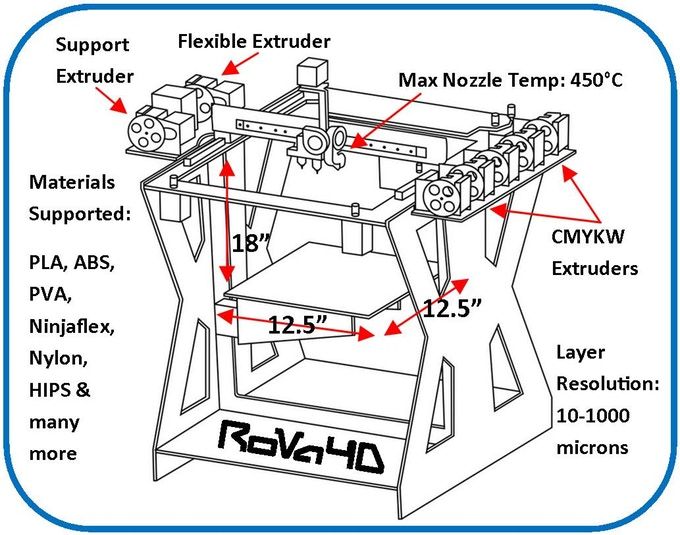 nine0003
nine0003
However, other factors can significantly affect print quality.
Other factors affecting print quality
- Nozzle size: Smaller nozzles on FDM 3D printer extruders allow more complex and precise parts to be printed. Standard nozzles are typically 0.4mm, although much smaller 0.1mm or 0.2mm nozzles are available for printing small and precise parts. They are also better suited for printing supports and ledges.
- Frame and Vibration Stability: The strong, heavy metal frame that secures the printer and print bed to the ground is less susceptible to vibrations and other external factors that can affect print quality.
- Material: different materials are more accurate and precise than others, or are easier to print successfully than others.
- Technology: for example, SLA printers are more accurate than FDM and PolyJet offers some of the best accuracy in 3D printing.
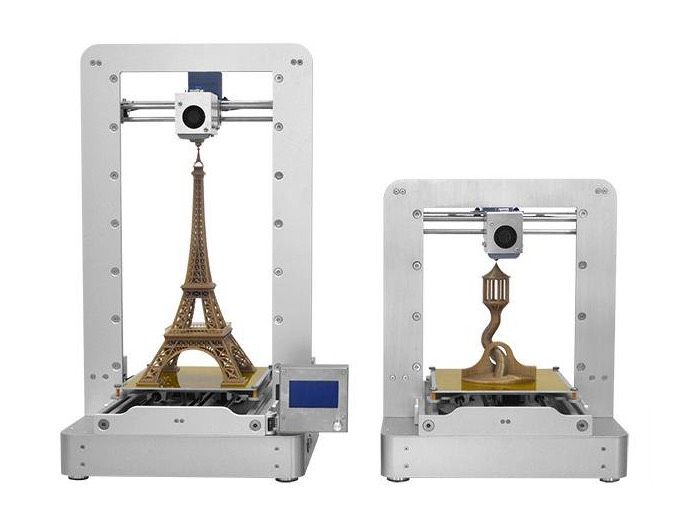 nine0014
nine0014 - Slicer and Printer Settings: Your 3D slicer settings will be critical to print quality, and even the highest resolution 3D printers will print poor quality models if not optimized.
When do high quality 3D printers matter the most?
If you are planning to 3D print a very simple structure, like a cube, then using a high quality 3D printer, using large or small layers will make no difference. In fact, using low layer heights will cause the exact same print to take much longer. nine0003
For these very simple models with few complex parts, a regular cheap 3D printer will work almost as well as a high resolution industrial 3D printer that costs 20 times more.
However, high-quality precision 3D printers greatly improve the quality of more complex parts that have diagonal or arcuate lines or sides, as well as embossing and engraving.
Particularly for curved or diagonal parts, the lower the layer height and the more precise the printer, the less stepped these elements will look and the smoother they will look even up close.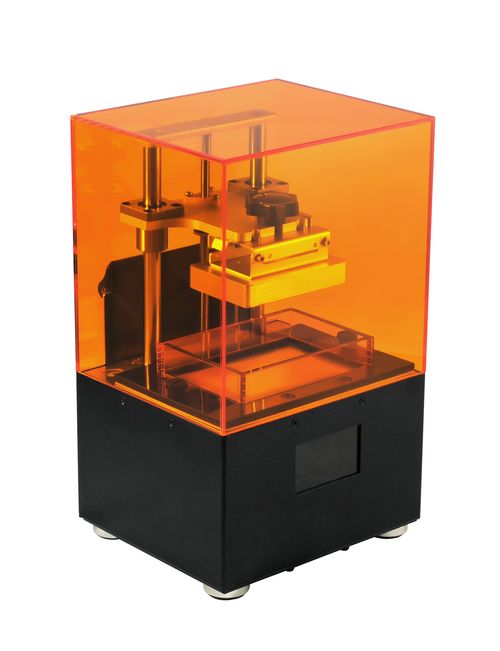 nine0003
nine0003
Very high resolution 3D printers such as resin printers are commonly used to 3D print jewelry molds such as this 3D printed ring.
Source: Shapeways.
What's more, if you're printing a small part, such as 3D printing a miniature or desktop model, using an accurate printer with a very low layer height can be worth it, because even if it takes several times longer, it still won't take over an hour. nine0003
Best High Resolution 3D Printers
Now we have illustrated the components that make up a high quality 3D printer, here are some guidelines.
High resolution and quality are relative here, meaning we have chosen printers in each price range that outperform others - a $200 3D printer can't compete with a $20,000 industrial 3D printer, but it can be the best in its class. price range.
Ender 3 V2 - Under $300 Precision 3D Printer
- Price: $279
- Assembly volume: 220 x 220 x 250 mm
- 3D printer type: FDM 3D printer and DIY 3D printer
- Minimum layer height: 0.
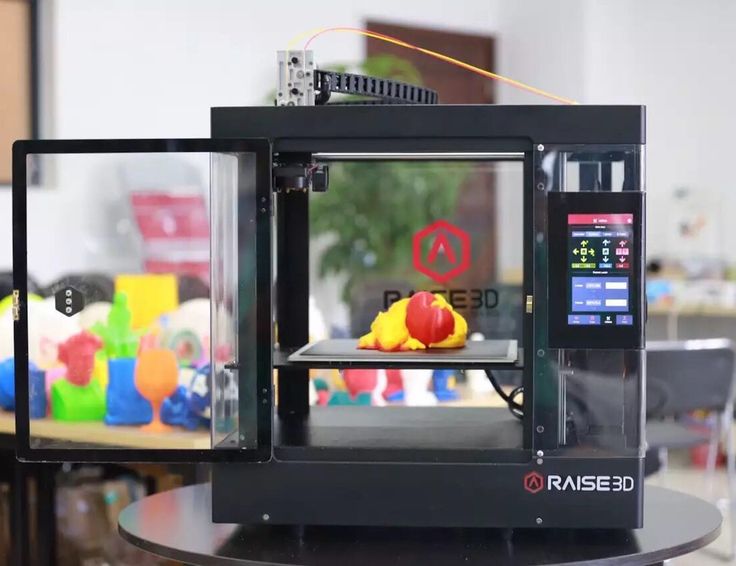 1 mm
1 mm
The Ender 3 is an inexpensive and relatively high quality 3D printer.
Just as the original Ender 3 began to age, Creality released the Ender 3 V2. A well-designed printer, the Ender 3 V2 eliminates many of the shortcomings of its predecessor while maintaining an affordable price for even the most budget-conscious manufacturers. nine0003
Belt tensioners, a 4.2.2 32-bit motherboard, and silent stepper drivers do a lot to present a printer that feels much more modern than the Ender 3. 3 V2 is not amazing: the layer resolution is only 100 microns. But don't be fooled: high resolution printing is only defined by high resolution.
In action, the Ender 3 V2 is built to a level of precision that seems unusually high for an inexpensive FDM printer. With few visible, warping or layering issues, with excellent overall quality for large parts and decent results for small, detailed parts. Added to this is a fairly large build volume - 220 x 220 x 250 mm to be precise - for large projects and even for small-scale printing.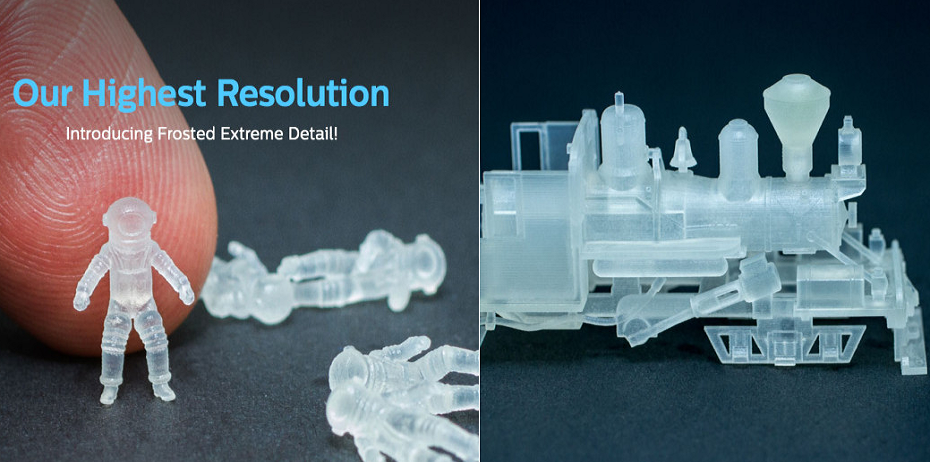 nine0003
nine0003
For the price, you also get to work with a decent range of materials - PLA, ABS, PETG, TPU. The only caveat is that you'll have to stick with simpler prints that are relatively free of complex embossing, small details, narrow arches, and the like.
In our experience, the Ender 3 V2 works best when creating household items such as plant pots or, say, vases, figurines, toys, accessories, and the like. We are sure that his printing abilities will be enough for a modest business selling non-geometrically complex products. nine0003
Keep in mind that the Ender 3 V2 is largely a hobby printer that needs a fair amount of tweaking to get the best results. Curious beginners and seasoned makers should find this an enjoyable part of the printing process, but "green" beginners may prefer an option with fewer "practical" aspects.
Elegoo Mars 2 Pro
- Price: $299
- Assembly volume: 129 x 80 x 160 mm
- 3D printer type: LCD 3D printer
- Z-axis accuracy: 0.
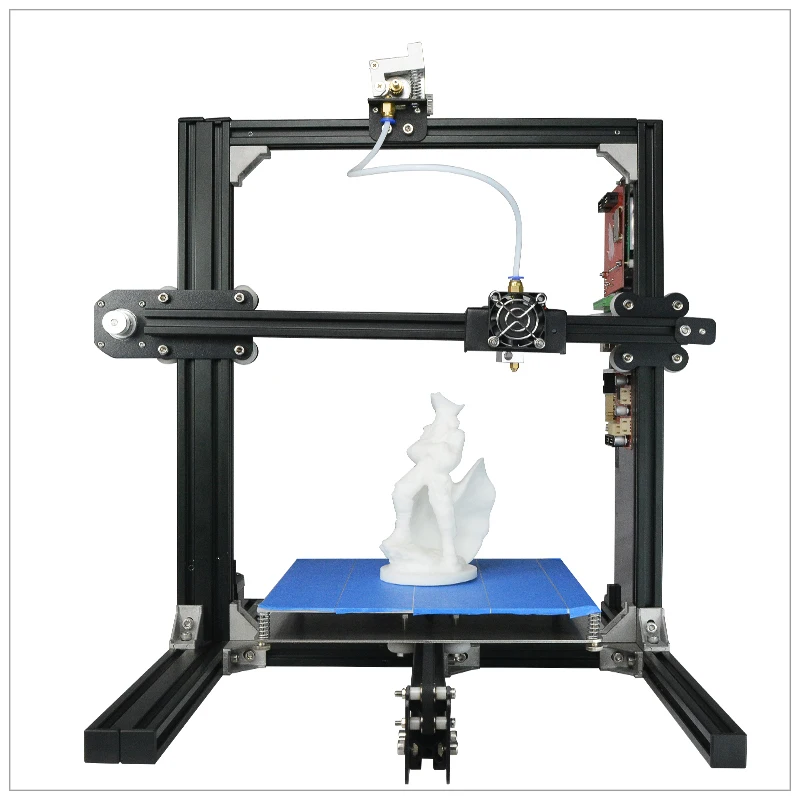 00125 mm, XY-axis resolution: 0.05 mm
00125 mm, XY-axis resolution: 0.05 mm
The Elegoo Mars and Anycubic Photon ranges have revolutionized low-cost, high-resolution 3D printing for hobbyists and businesses around the world. The Elegoo Mars 2 is able to create resin models so accurate that it is increasingly being used to 3D print jewelry molds before they are molded into gold or other metal rings, bracelets and chains.
As an MSLA printer, Elegoo Mars prints resin models that outperform FDM counterparts in high resolution 3D prints with almost no visible layers. The 6-inch 2K LCD screen enables fast 3D printing by allowing a layer to be cured every 2 seconds. nine0003
In addition, Mars 2 Pro's CNC-machined aluminum construction improves stability by eliminating external vibrations that can affect 3D print detail. In addition, the new and improved build plate is designed for better adhesion and a higher quality result.
The printer is available in 12 languages, so those who do not speak English need not worry, and if you have any problems with the Elegoo Mars 2 Pro, the company will replace it under a 1-year warranty.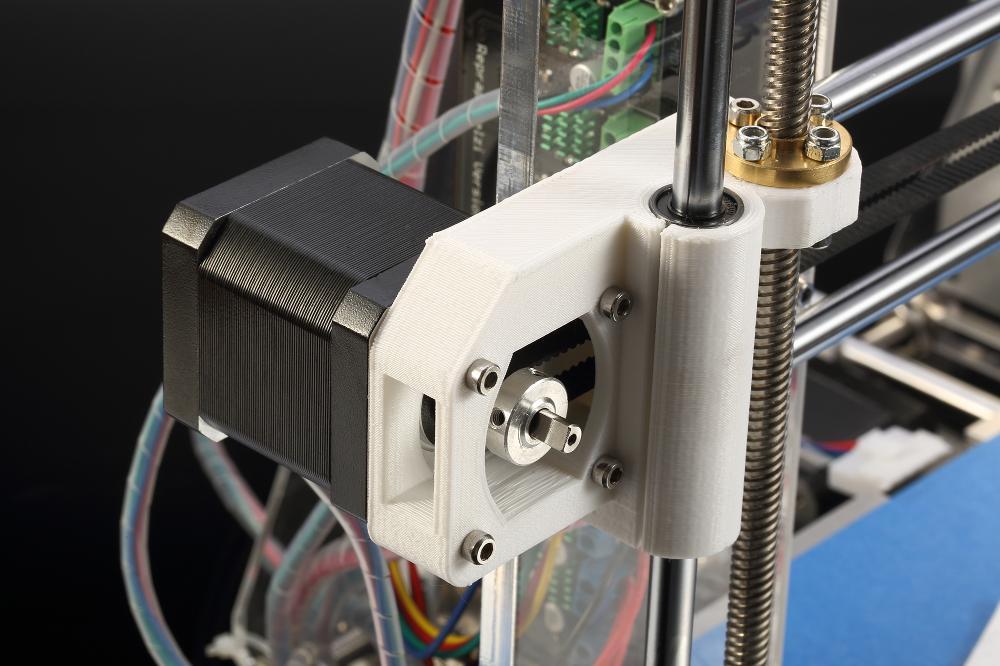 Overall, this is a great, high quality 3D printer for producing resin parts cheaply and accurately. nine0163 3D print of a dinosaur head we made while reviewing the Elegoo Mars 2 Pro.
Overall, this is a great, high quality 3D printer for producing resin parts cheaply and accurately. nine0163 3D print of a dinosaur head we made while reviewing the Elegoo Mars 2 Pro.
Anycubic Photon Mono 4K
- Price: $299
- Assembly volume: 132 x 80 x 165 mm
- 3D printer type: LCD 3D printer
- Z-axis accuracy: 0.00125 mm, XY resolution: 0.035 mm
The Anycubic Photon Mono 4K is another iterative upgrade of the venerable family of resin printers, an impressive option for those into high-resolution 3D printers. The Anycubic Photon Mono 4K is without a doubt one of the best cheap high resolution 3D printers out there. nine0003
Under the hood of the Anycubic Photon Mono 4K is, you guessed it, a 4K LCD panel capable of delivering 35 micron pixel resolution, 15 microns better than its predecessor. In simple terms, this means a smooth surface and the finest detail in every print, which is immediately visible to the naked eye.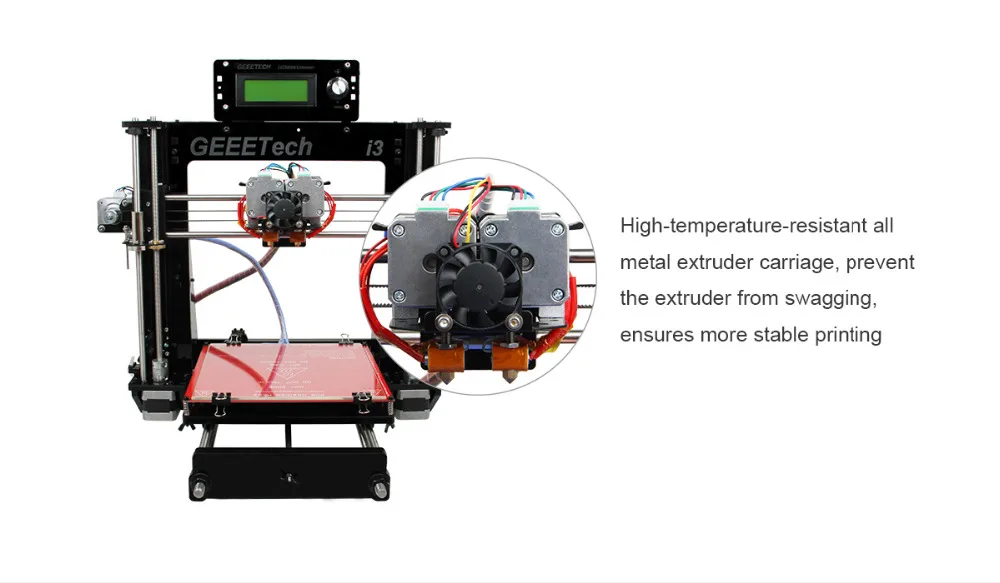
Imperfections are almost indistinguishable and, dare we say, the results are overwhelmingly close to perfection, as we have seen in this price range. Anycubic Photon Mono 4K also penetrates prints with a more than respectable layer cure time of less than 2 seconds. nine0003
For us, this printer has great hobby potential. We could hardly find an application where it would not impress. However, the Anycubic Photon Mono 4K comes into its own when working with 3D models and the like, thanks to its penchant for carving out detailed details.
Like other resin printers, the Anycubic Photon Mono 4K has its fair share of clutter and requires a strict regular cleaning routine. The lack of a resume feature and the sometimes unstable native slicer seem like annoying oversights. But these are minor shortcomings for a great inexpensive small form factor resin printer. nine0003
Elegoo Mars 3 - Best inexpensive resin choice
- Price: $349 - Available on Amazon here
- Assembly volume: 143 x 90 x 165 mm
- 3D printer type: LCD 3D printer
- Z-axis accuracy: 0.
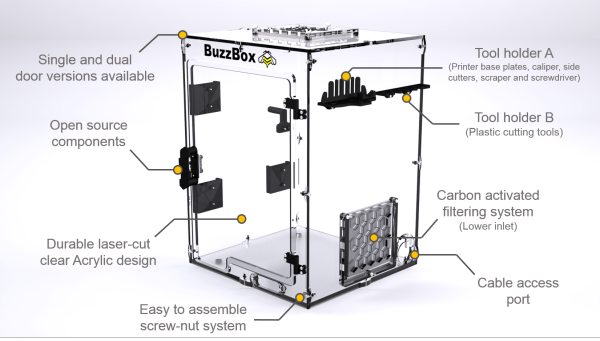 00125 mm, XY-axis resolution: 0.035 mm
00125 mm, XY-axis resolution: 0.035 mm
The Elegoo Mars is back and perhaps even better than ever, plus a new number. Fast, superbly detailed, compact and economical, the Elegoo Mars 3 also has the features we prefer to see in high-resolution resin printers, namely a 6.6-inch 4K ultra-monochrome LCD display and razor-slim 35-micron resolution. nine0003
Marketing and technical chatter aside, the Elegoo Mars 3 delivers impressively detailed results with clean edges and precise precision suitable for even the most demanding resin projects. The larger case volume of 143 x 90 x 165mm compared to the Mars 2 Pro also allows for larger prints while retaining the finest features and fine details.
We're particularly impressed with how well the printer handles figurines, toys and models, even those we think are big for a resin printer. Most importantly, the Elegoo Mars 3 sticks to the Mars tradition of flawless printers that perform at the same high level day in and day out. In other words, it's a workhorse. nine0003
In other words, it's a workhorse. nine0003
Despite some concerns about the flimsy lid and the lack of features such as air filtering and Wi-Fi connectivity, we highly recommend the Elegoo Mars 3 to manufacturers, hobbyists and businesses looking for an affordable high resolution 3D printer. Please note that Elegoo Mars 3 is tied to the ChiTuBox slicer and will not work with third party alternatives.
Prusa i3 MK3S+
- Price: $749 set / $999 complete
- Assembly volume: 250 x 210 x 200 mm
- 3D printer type: FDM 3D printer and DIY 3D printer
- Minimum layer height: 50 microns
The Prusa i3 MK3S+ combines high resolution with workhorse reliability and is known as one of the best 3D printers in the world. This FDM printer can print accurate 50 micron layers and do it again and again without fail.
For better XY resolution and detail quality, resin printers like Elegoo Mars are better, but Prusa still has great quality, wider material compatibility - from ABS to PLA, polycarbonate to nylon! - and can even be converted into a color 3D printer that can print 5 colors at once if you purchase the Multi Material Upgrade Kit. nine0003
nine0003
It's fast, constantly improving, and combines superior resolution with tenacity and reliability.
Formlabs Form 3
- Price: $3,499
- Assembly volume: 145 x 145 x 185 mm
- 3D printer type: SLA 3D printer
- XY resolution: 25 microns
Printers from Formlabs, a leading company in consumer 3D resin printing, are currently widely used in the jewelry, dental, medical and hearing aid industries. nine0003
If you look at the numbers behind the Formlabs Form 3 - which is, first of all, the build volume of 145 x 145 x 185 mm and a resolution of 25 microns - it does not attract too much attention. However, Formlabs' innovative LFS technology is the type of innovation we love to see. The real sophistication lies in how easy the printer is to use. With Formlabs Form 3, it's all about the machine doing its job, no fiddling or babysitting.
And the results will not keep you waiting. Equipped with high quality resin, the Formlabs Form 3 works exceptionally well, producing gorgeous and detailed prints suitable for commercial purposes.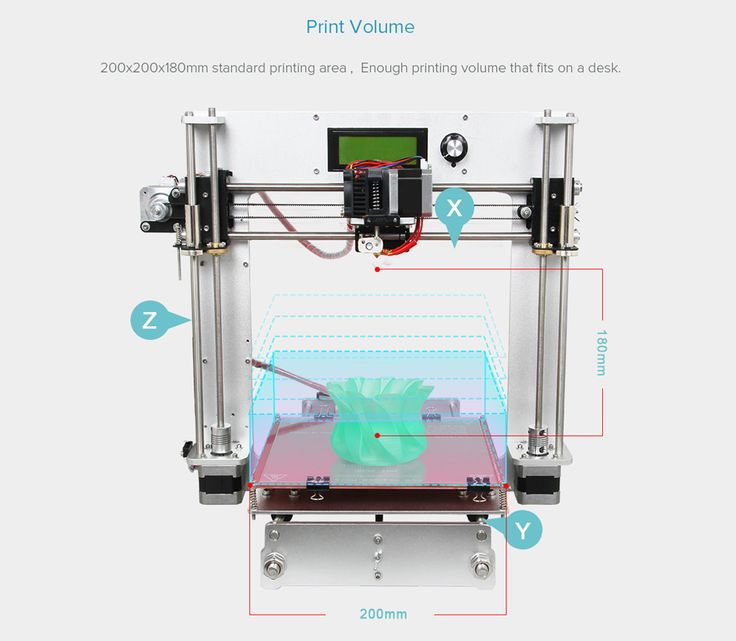 Print failures are virtually non-existent; in order for any errors to occur, it is necessary to physically shake the machine while printing. nine0003
Print failures are virtually non-existent; in order for any errors to occur, it is necessary to physically shake the machine while printing. nine0003
For the pleasure of owning a Formlabs Form 3, you pay a lot of money. However, these costs are quickly repaid in time savings due to the printer's set-and-forget nature, which can be invaluable in a rapidly changing business environment. For SMBs that require low-volume, trouble-free, accurate models along with prototyping, there is little that can compete with the Formlabs Form 3.
Overall, for precision 3D printing, the Form 3 is one of the best quality high-resolution 3D printers out there. nine0003
Ultimaker S3
- Price: $3,850
- Assembly volume: 230 x 190 x 200 mm
- 3D printer type: FDM 3D printer and dual extruder 3D printer
- Minimum layer height: 20 microns
The Ultimaker S3 is smaller but has the same performance as the S5. It is capable of creating incredible 20 micron layers that are so small they are hard to see.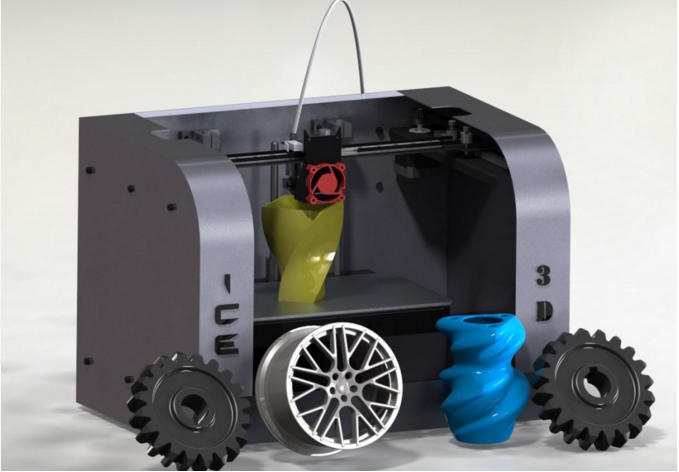 While this slows down print times by increasing the number of layers per part, the resulting model will be of unsurpassed quality compared to almost any other FDM printer. nine0003
While this slows down print times by increasing the number of layers per part, the resulting model will be of unsurpassed quality compared to almost any other FDM printer. nine0003
In addition to being fantastically accurate, the Ultimaker S3 is also a dual-extruder 3D printer that produces accurate, multi-color or multi-material 3D prints and is therefore widely used for prototyping architectural models of buildings prior to construction work.
For those interested in creating architectural models, check out our ranking of the best architectural software.
The printer is easy to use, easy to print with - Ultimaker also owns Cura, the most popular 3D slicer - and delivers fantastic 20 micron precision with a wide range of compatible materials, including carbon fiber. Overall, the printer speaks for itself and proves to be one of the best high resolution 3D printers in FDM. nine0003
Benefits of High Resolution 3D Printer
Best Quality: High resolution results in a smoother surface, with excellent detail and detail aesthetics.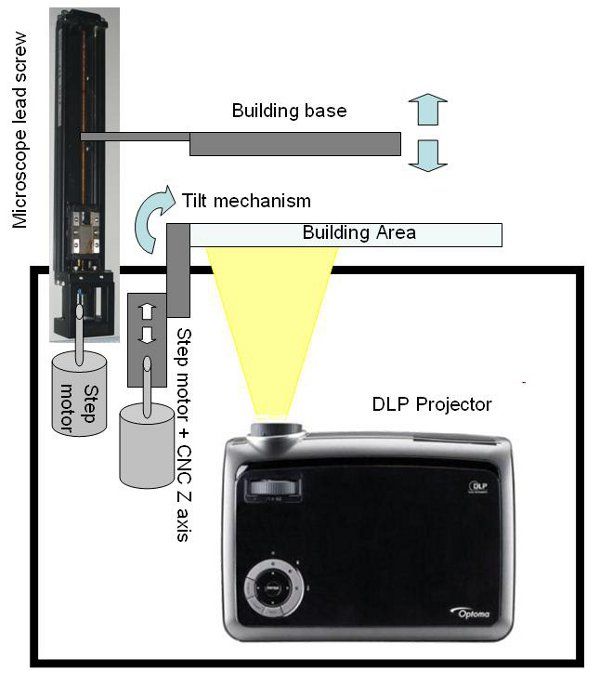
The only way to get fine details: models that have arches and sharp diagonal details can look very jagged at high layer heights, and low resolution 3D printers can't adequately print those details.
Ideal settings required: improved accuracy requires perfect calibration, perfect temperature settings to avoid filament or resin defects, and proper bed temperature and adhesion on the platen. Any errors here may result in defects in the print.
Significantly slower: prints with a 25 micron layer height four times longer than with a 100 micron layer because four 25 micron layers equals one 100 micron layer height. Large and complex models may take several days to print. nine0003
Higher chance of print failure: The more layers a model has, the more chances for errors to occur that can render a part useless.
High-Resolution 3D Printing Technologies
High-Resolution 3D Printing Technologies include:
FDM - Fused Deposition Modeling
resolution. The process involves layering molten filament onto a fixed build platform using a heated extruder to create patterns. FDM is at the lower end of the high resolution spectrum and is commonly used as a low cost alternative to more expensive technologies. FDM printers typically provide resolutions in the 50 to 200 micron range. nine0003
The process involves layering molten filament onto a fixed build platform using a heated extruder to create patterns. FDM is at the lower end of the high resolution spectrum and is commonly used as a low cost alternative to more expensive technologies. FDM printers typically provide resolutions in the 50 to 200 micron range. nine0003 Resin (SLA, DLP, LCD)
Photopolymerization, commonly known as resin 3D printing, involves projecting a laser or light source to cure a liquid photosensitive resin into layers. Specific technologies include stereolithography (SLA), low power stereolithography (LFS), masked stereolithography (MSLA), and digital light processing (DLP). Resin printers typically achieve a layer resolution of 25-35 microns.
MJF - multi-jet simulation
Multi-jet modeling, or material inkjet, uses inkjet printheads to layer-by-layer melted materials to create a 3D part or model. Expensive and high-precision MJF printers are a reserve of large companies with a large treasury.
PolyJet - Resin Inkjet
PolyJet, or photopolymer inkjet, printers use layers of photosensitive liquid photopolymer resin to create prints, which is fed through the printheads and cured by exposure to ultraviolet light. Like the MJF, the PolyJet is expensive, although the printers are usually smaller. nine0003
High Definition 3D Printer FAQ
Are high definition 3D prints more durable?
No, on the contrary. Generally, thicker layers (or lower resolution) produce harsher results. This is because they minimize the number of contact points between layers. Fewer layers in contact with each other means less chance of bond strength problems.
However, print strength depends on many factors, including adhesion and layer height, extruder and bed temperatures, media quality and type, and the printing technology used. The definitive answer depends more on the specific printer than the resolution. A capable device, such as any of the best high resolution 3D printers, produces reliable parts at higher resolution. nine0163
nine0163
What is high resolution 3D printing?
The answer to this question varies greatly depending on who you ask. To keep things simple, high-resolution 3D printing is best described as the process of printing parts with a higher overall quality—whether it be smoothness, quality of finish, detail, or model fidelity—than is typically found in the realm of 3D printing.
What can be done with a high resolution 3D printer?
High resolution 3D printing suitable for a wide range of applications. In the commercial realm, companies prefer high-resolution printing in areas such as dentistry, jewelry, biomedicine, and all kinds of functional prototyping where accuracy is critical. In the hobby realm, creators are turning to high-resolution printing for projects that require fine detail, such as figurines, modeling, and other decorative items. nine0003
How does 3D printing resolution affect speed?
Higher resolution reduces speed.
Print speed refers to how quickly the printer applies each layer.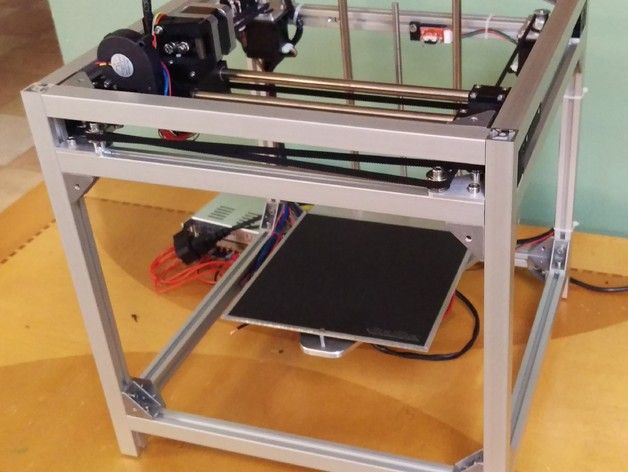 Because high resolution printing is synonymous with thinner layers, print speeds are typically slower than low resolution printing. With high-resolution 3D printing, printing speed is sacrificed in favor of accuracy. The exact time depends on the desired resolution, the underlying technologies of the printer being used such as resin or MJF, and the complexity of the model. nine0163
Because high resolution printing is synonymous with thinner layers, print speeds are typically slower than low resolution printing. With high-resolution 3D printing, printing speed is sacrificed in favor of accuracy. The exact time depends on the desired resolution, the underlying technologies of the printer being used such as resin or MJF, and the complexity of the model. nine0163
What is the resolution of a 3D printer? What does it affect. How to setup!.
In many technical descriptions, one can come across such a characteristic of a 3D printer as resolution. This parameter is changeable and therefore it is also important to understand what it is and what values it can take, since this will be reflected in the print results.
An analogy can be made with an ordinary image, that is, a picture. The higher the resolution, the better the picture will be, the higher the detail. However, the size of such an image will be larger. This is natural for any devices (phones, tablets, TV screens, etc.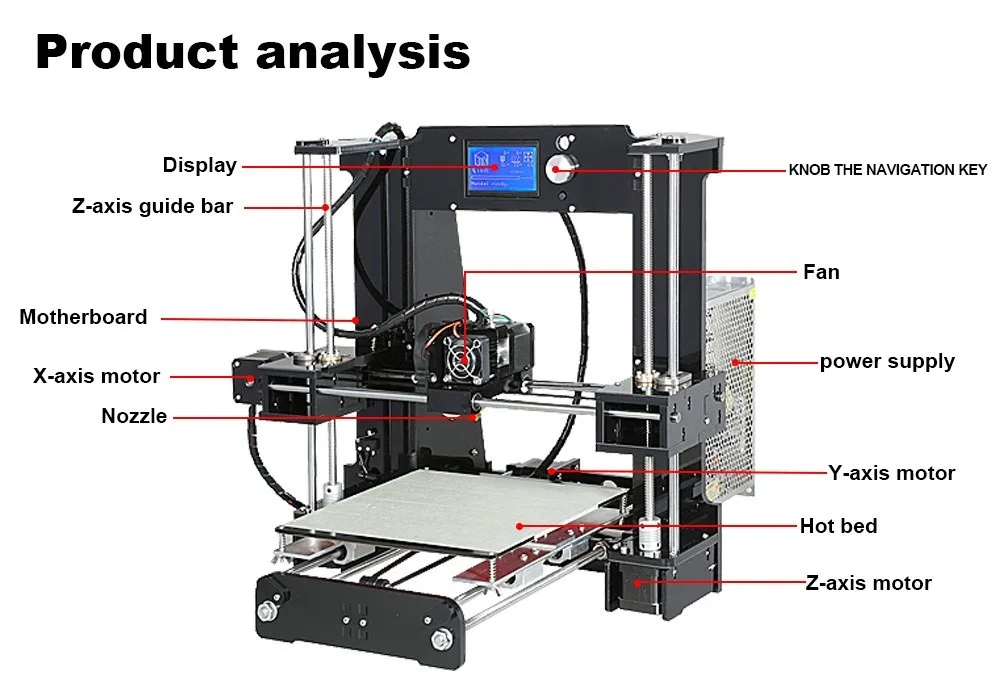 ). It's the same with a 3D printer. nine0003
). It's the same with a 3D printer. nine0003
Any 3D model is formed by slicing. This is the process of cutting into separate horizontal layers, from which a physical model is formed.
The 3D printer has two types of resolutions:
• along the X and Y axes;
• Z-axis.
The first will be the resolution in the 3D plane, and the second will be the height of the layer.
In the specifications of a 3D printer, the maximum resolution is the minimum layer height value. The lower the layer height, the better the detail will be. At the same time, the number of layers will also increase, which will affect the printing time - it will increase. nine0003
For comparison, we can take FDM, SLA printers. Printing technologies are different, as are the characteristics. For an FDM printer, the minimum layer height is 0.05mm. An indicator less does not make sense, since these devices are not suitable for printing highly detailed products, as well as small models. And a smaller value of resolution along the Z axis will not affect the print quality.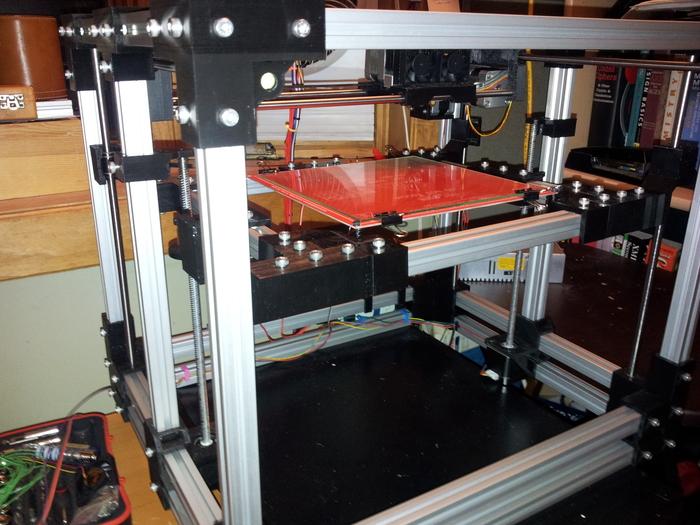 In SLA 3D printers, the layer thickness can be 0.005mm. Therefore, such devices are used to print small parts, such as jewelry, dental products. nine0003
In SLA 3D printers, the layer thickness can be 0.005mm. Therefore, such devices are used to print small parts, such as jewelry, dental products. nine0003
A legitimate question arises: “Is high resolution always required?” If you set the layer thickness to the minimum value, then the print time will always increase. For example, if you print a product not at 100 microns, but at 25 microns of layer height, then the printing time will increase by 4 times, that is, in direct proportion.
If your model is a flat wall at a right angle, the resolution increase will not affect the quality. At least substantially accurate. In the event that your 3D printer is not well calibrated, then the layers may shift relative to each other. And it turns out that the more layers there are, the greater the displacement and, accordingly, the irregularities. And as a result, at high resolution, you can get a detail of worse quality. nine0003
If you need to print miniature products with complex elements: engravings, roundness, arches, a large number of complex shapes, then high resolution will be a must, because otherwise no elements will be clearly printed, and they may simply be invisible.
Z-axis resolution will be limited by the design of the printer. For FDM devices, this will be the nozzle diameter. It is impossible to set the layer thickness greater than the nozzle diameter, since this would be impossible from a physical point of view. For SLA printers, it is also impossible to supply more than 100 microns, since the layer must be well cured by the laser. The higher the layer height, the longer it will take to illuminate the laser. In addition, due to the high layer thickness, various defects and artifacts can occur, that is, the quality of the product will suffer greatly. nine0163
The X and Y resolution will depend on the design of the printer. When viewed from the point of view of prints, then this indicator will affect the last layers of the product. For an FDM printer, it will also depend on the nozzle diameter, and the smaller it is, the higher the resolution will be. In this case, the fills will be less noticeable, and the quality of the product will be higher.